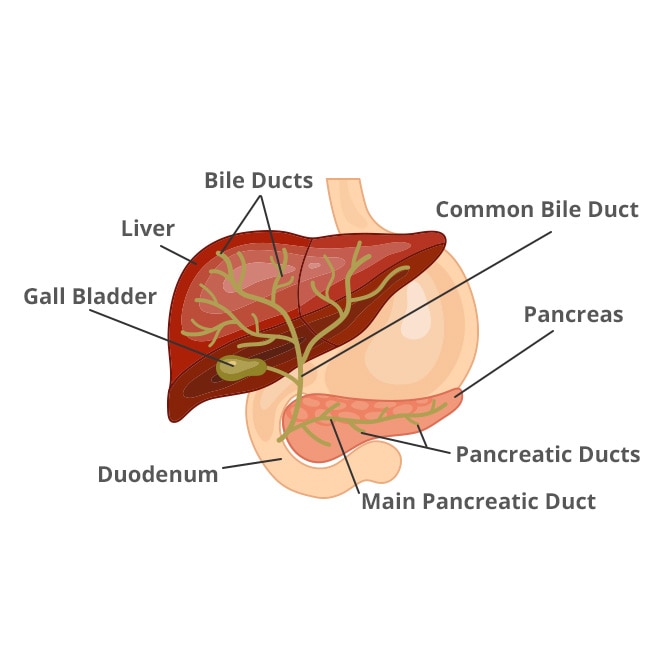Additional file 7 Figures of the relationship between histological groups with age and survivala The probability density function of age at the time of surgery Kasai procedure in relation to histological scores 1 for inflammation or fibrosis in biliary atresia P 07 07. The age of diagnosis and operation for BA greatly affects its outcome.

Biliary Atresia Treatment In Ayurveda With Herbal Remedies
Magnetic resonance cholecystopancreatography hepatobiliary scintigraphy percutaneous cholecysto-cholangiography endoscopic retrograde cholangiopancreatography percutaneous liver biopsy risk scores and decisional flowchart.

Age at diagnosis of biliary atresia. Biliary atresia BA is an important liver disease of children. Biliary atresia PaediatricFOAM. We report four cases of late-onset.
Stools change color because bilirubin is not reaching the intestines and passing out of the body in the stool. Biliary atresia BA is a severe condition with an incidence of approximately 114000116000 live births 1 2 frequently resulting in severe morbidity or death. 1996 Jun976 Pt 1828-31.
He was born at term via normal vaginal delivery and mum had a normal pregnancy. Methods We examined liver biopsies from 47 infants with biliary atresia enrolled in a. We aimed to determine the age.
1 Infants with biliary atresia develop jaundice and pale acholic stools within the first few weeks after birth secondary to fibroinflammatory obstruction of the extrahepatic bile ducts that drain bile from the liver into the intestines. Infants with biliary atresia may also have pale yellow gray or white stools. Average of 6070 days of life 5.
Authors P I Tarr 1 J E Haas D L Christie Affiliation 1 Department of Pediatrics University of Washington School of Medicine Seattle. Methods We retrospectively reviewed features of MRI and ultrasonography US performed in infants with jaundice between January 2009 and June 2016 under approval of the institutional review board including the maximum diameter of periportal signal change. Biliary atresia is the most common cause of pediatric end-stage liver disease and the leading indication for pediatric liver transplantation.
Useful Data 2020 on Cholangitis Following Kasai Procedure for Biliary Atresia Landmark Study on Universal. Infants with biliary atresia typically develop jaundice by 3 to 6 weeks of age. However rare cases of BA in older infants have also been reported.
Presentation may include jaundice pale stools or hepatomegaly. Jaundice is the only symptom of BA in the neonatal age group. Earlier diagnosis of biliary atresia provides the best opportunity for improving long-term outcomes.
Background Young age at portoenterostomy has been linked to improved outcome in biliary atresia but pre-existing biological factors may influence the rate of disease progression. Early diagnosis and surgical management ideally before 60 days of age result in improved outcomes. Results The diameter of the T2-hyperintense structure at porta hepatis in biliary atresia 479 114 mm is larger than in idiopathic.
IntroductionBiliary atresia BA is the most common cause of cholestatic jaundice in infancy. Has not changed over the past 15 years. Thus some form of screening for biliary atresia may be the most effective means to identify infants earlier than the current US.
AJR206 May 2016 W75 Ultrasound for the Diagnosis of Biliary Atresia potential publication bias displayed asymme - try in the funnel plot indicating no publica-tion bias p 029. We aimed to determine the age at diagnosis of BA in the Military Health System MHS and to compare the age at diagnosis by access to care models. Unfortunately average age at diagnosis of biliary atresia and HPE in the US.
However distinguishing biliary atresia from other more common causes of prolonged neonatal jaundice can be difficult. Biliary atresia BA is the most common cause of cholestatic jaundice in infancy. Early diagnosis and surgical management ideally before 60 days of age result in improved outcomes.
Objectives To evaluate MRI findings and to generate a decision tree model for diagnosis of biliary atresia BA in infants with jaundice. It is the leading indication for liver transplantation in children 3 4. After delivery he was noted to be jaundiced but his bilirubin level was below the treatment line.
To evaluate the accuracy of biomarkers for the early diagnosis of biliary atresia BA and prognostic stratification after Kasai portoenterostomy KPE. Age at diagnosis is a modifiable risk factor in outcomes after hepatoportoenterostomy in biliary atresia. Biliary atresia cytomegalovirus and age at referral Pediatrics.
Prenatal diagnosis is important as it allows parents to make informed decisions concerning. The incidence of BA varies among different studies and long-term trends are controversial. A fibro-obliterative obstruction of the extrahepatic biliary tree progressing to intrahepatic ducts which can develop in utero or during the neonatal period.
A serious disease requiring prompt early diagnosis preferably before age 6-8 weeks. Biliary atresia should be excluded in. George a 3-week-old boy is referred to the paediatric assessment unit for prolonged jaundice.
In this study we aimed to determine whether molecular profiling of the liver identifies stages of disease at diagnosis. Thirty-one children with biliary atresia from our hospital and 201 children with such disease from other hospitals in China were reviewed retrospectively in terms of. The cut-off value for a biliary atresia diagnosis was obtained by area under the curve analysis.
Biliary atresia BA is classically described at the neonatal age. Treatment Coagulopathy if present is responsive to Vitamin K Surgery Kasai Procedure Best predictor of success is age at surgery emphasizing importance of early diagnosis Mieli-Vergani 2009 Good bile flow. Diagnosis of Biliary Atresia BA must be suspected in all neonates in whom jaundice persists after the period of physiologic hyper-bilirubinemia first 14 days of life.
Practical approach for the diagnosis of biliary atresia on imaging part 2.

Clinical And Laboratory Findings Of Biliary Atresia And Non Biliary Download Table

Tidak ada komentar